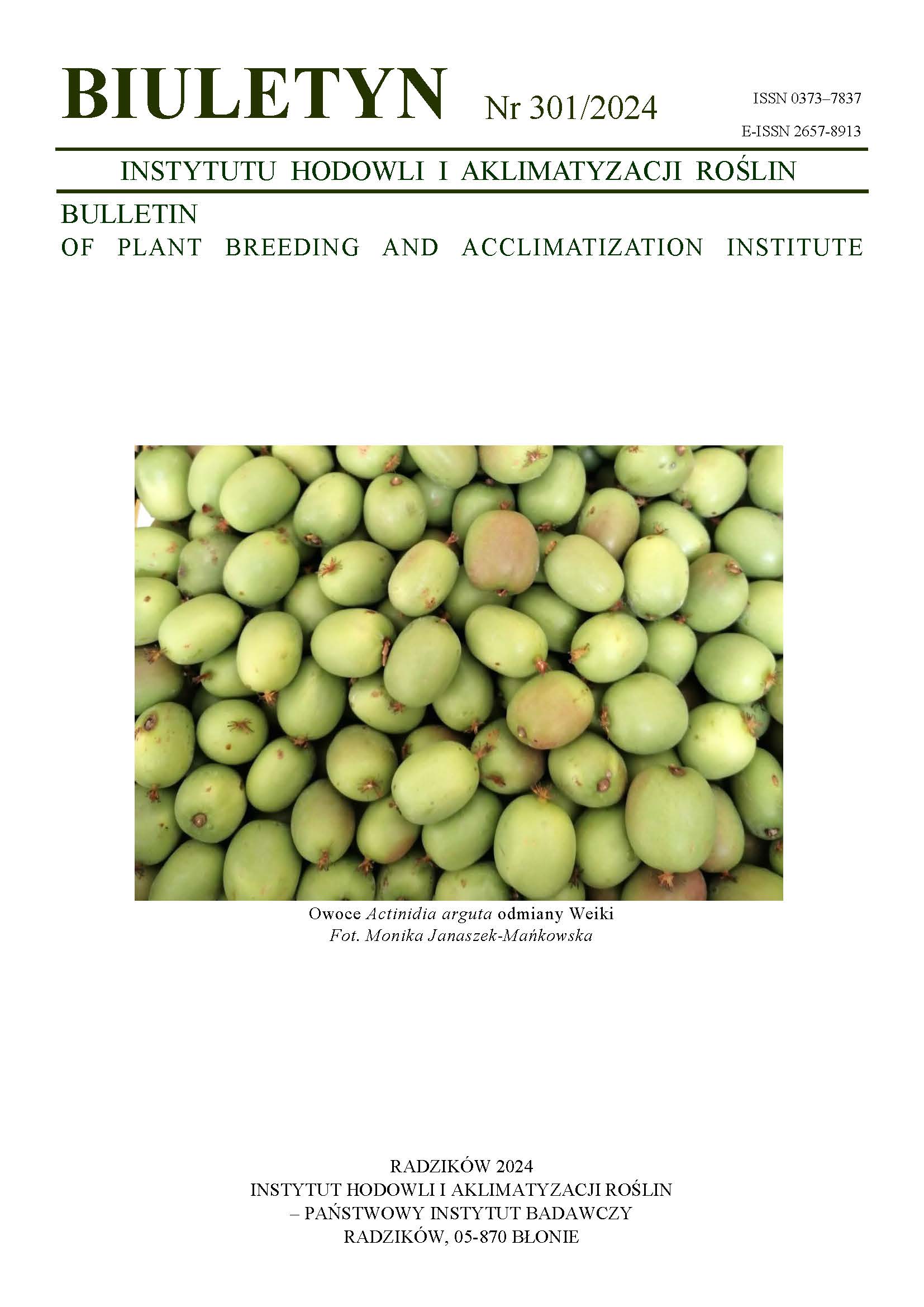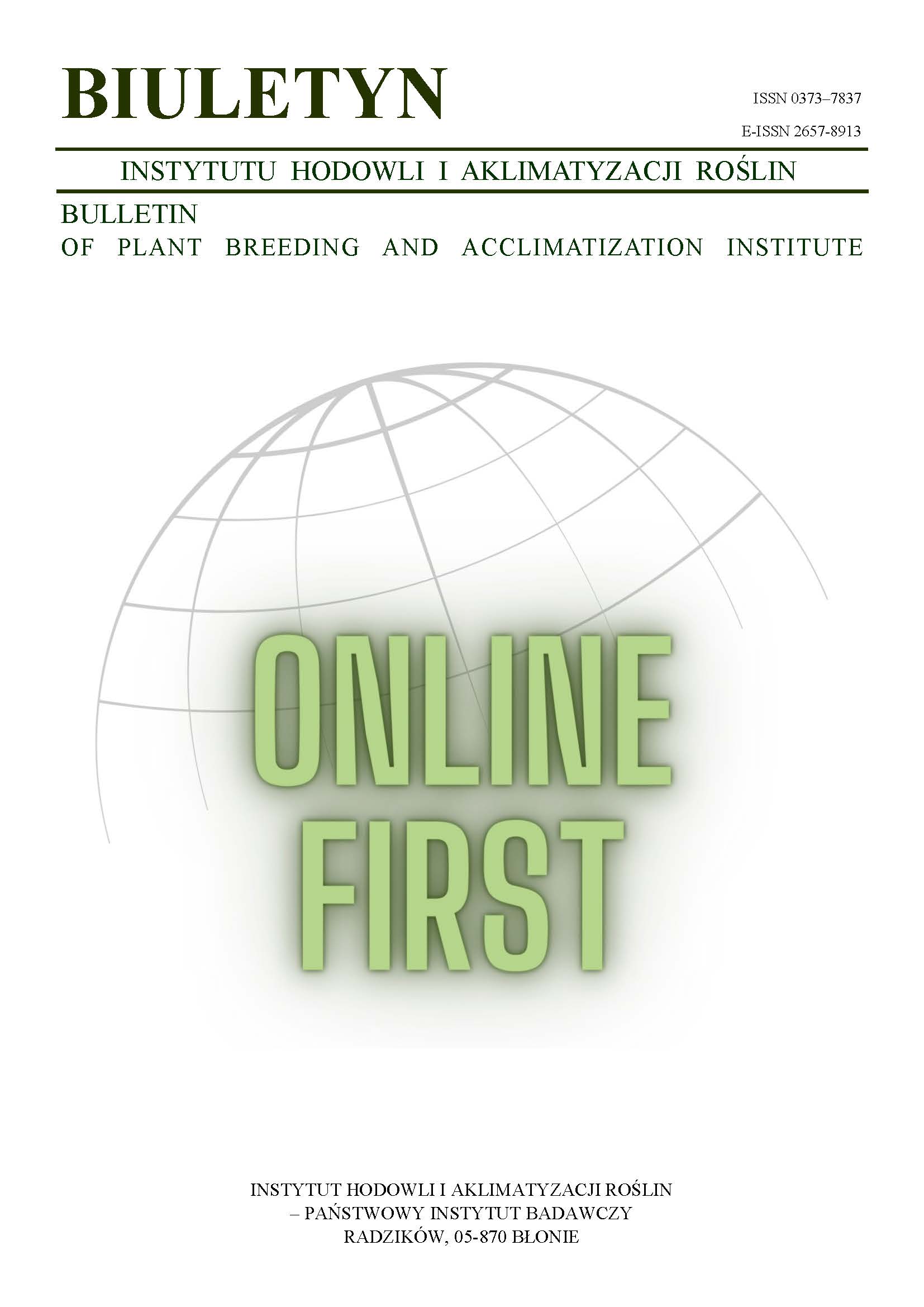Searching for oat (Avena sativa L.) resistance to a new pathogenic and mycotoxigenic species — Fusarium langsethiae
Grzegorz Lemańczyk
grzegorz.lemanczyk@utp.edu.plUniwersytet Technologiczno-Przyrodniczy im. J. J. Śniadeckich w Bydgoszczy (Poland)
Aleksander Łukanowski
Uniwersytet Technologiczno-Przyrodniczy im. J. J. Śniadeckich w Bydgoszczy (Poland)
Anna Baturo-Cieśniewska
Uniwersytet Technologiczno-Przyrodniczy im. J. J. Śniadeckich w Bydgoszczy (Poland)
Supporting Agencies
Prace zostały wykonane w ramach badań podstawowych na rzecz postępu biologicznego w produkcji roślinnej na podstawie decyzji Ministra Rolnictwa i Rozwoju Wsi nr HOR.hn.802.10.2018, Zadanie 29.
Keywords:
Fusarium langsethiae, hodowla odpornościowa, owies, postęp hodowlany, real-time PCR, wrażliwość genotypówReferences
Imathiu S. M., Edwards S. G., Ray R. V., Back M .A. 2013. Fusarium langsethiae — a HT-2 and T-2 Toxins Producer that Needs More Attention. J. Phytopathol. 161: 1 — 10.
Imathiu S. M., Ray R. V., Back M., Hare M. C., Edwards S. G. 2009. Fusarium langsethiae pathogenicity and aggressiveness towards oats and wheat in wounded and unwounded in vitro detached leaf assays. Eur. J. Plant Pathol. 124: 117 — 126.
Lemańczyk G. 2008. Zasiedlenie ziarna pszenicy ozimej przez grzyby rodzaju Fusarium w zależności od zdrowotności podstawy źdźbła, Zesz. Probl. Post. Nauk Roln. 529: 65 — 71.
Łukanowski A., Lenc L., Sadowski C. 2008. First report on the occurrence of Fusarium langsethiae isolated from wheat kernels in Poland. Plant Dis. 92 (3): 488.
Torp M., Langseth W. 1999. Production of T-2 toxin by Fusarium resembling Fusarium poae. Mycopathologia 147: 89 — 96.
Torp M., Nirenberg H. I. 2004. Fusarium langsethiae sp. nov. on cereals in Europe. Int. J. Food Microbiol. 95: 247 — 256. Google Scholar
Imathiu S. M., Ray R. V., Back M., Hare M. C., Edwards S. G. 2009. Fusarium langsethiae pathogenicity and aggressiveness towards oats and wheat in wounded and unwounded in vitro detached leaf assays. Eur. J. Plant Pathol. 124: 117 — 126.
Lemańczyk G. 2008. Zasiedlenie ziarna pszenicy ozimej przez grzyby rodzaju Fusarium w zależności od zdrowotności podstawy źdźbła, Zesz. Probl. Post. Nauk Roln. 529: 65 — 71.
Łukanowski A., Lenc L., Sadowski C. 2008. First report on the occurrence of Fusarium langsethiae isolated from wheat kernels in Poland. Plant Dis. 92 (3): 488.
Torp M., Langseth W. 1999. Production of T-2 toxin by Fusarium resembling Fusarium poae. Mycopathologia 147: 89 — 96.
Torp M., Nirenberg H. I. 2004. Fusarium langsethiae sp. nov. on cereals in Europe. Int. J. Food Microbiol. 95: 247 — 256. Google Scholar
Lemańczyk, G. ., Łukanowski, A. . and Baturo-Cieśniewska, A. . (2019) “Searching for oat (Avena sativa L.) resistance to a new pathogenic and mycotoxigenic species — Fusarium langsethiae ”, Bulletin of Plant Breeding and Acclimatization Institute, (286), pp. 165–168. doi: 10.37317/biul-2019-0036.
Authors
Grzegorz Lemańczykgrzegorz.lemanczyk@utp.edu.pl
Uniwersytet Technologiczno-Przyrodniczy im. J. J. Śniadeckich w Bydgoszczy Poland
Authors
Aleksander ŁukanowskiUniwersytet Technologiczno-Przyrodniczy im. J. J. Śniadeckich w Bydgoszczy Poland
Authors
Anna Baturo-CieśniewskaUniwersytet Technologiczno-Przyrodniczy im. J. J. Śniadeckich w Bydgoszczy Poland
Statistics
Abstract views: 206PDF downloads: 175
License

This work is licensed under a Creative Commons Attribution-ShareAlike 4.0 International License.
Upon submitting the article, the Authors grant the Publisher a non-exclusive and free license to use the article for an indefinite period of time throughout the world in the following fields of use:
- Production and reproduction of copies of the article using a specific technique, including printing and digital technology.
- Placing on the market, lending or renting the original or copies of the article.
- Public performance, exhibition, display, reproduction, broadcasting and re-broadcasting, as well as making the article publicly available in such a way that everyone can access it at a place and time of their choice.
- Including the article in a collective work.
- Uploading an article in electronic form to electronic platforms or otherwise introducing an article in electronic form to the Internet or other network.
- Dissemination of the article in electronic form on the Internet or other network, in collective work as well as independently.
- Making the article available in an electronic version in such a way that everyone can access it at a place and time of their choice, in particular via the Internet.
Authors by sending a request for publication:
- They consent to the publication of the article in the journal,
- They agree to give the publication a DOI (Digital Object Identifier),
- They undertake to comply with the publishing house's code of ethics in accordance with the guidelines of the Committee on Publication Ethics (COPE), (http://ihar.edu.pl/biblioteka_i_wydawnictwa.php),
- They consent to the articles being made available in electronic form under the CC BY-SA 4.0 license, in open access,
- They agree to send article metadata to commercial and non-commercial journal indexing databases.














